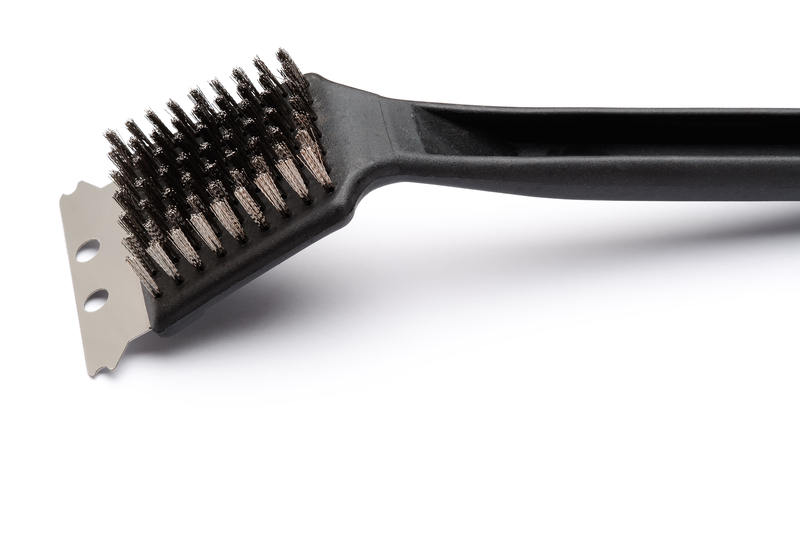Revitalize Your Window Sills with Mould Removal
Posted on 16/08/2025
Revitalize Your Window Sills with Mould Removal: A Comprehensive Guide
Have you noticed unsightly black, green, or brown spots creeping across your window sills? These are often signs of mould--a common but frequently overlooked household problem. Mould not only mars the beauty of your home but can also affect air quality and pose health risks. In this comprehensive article, discover why mould removal for window sills is crucial, how you can tackle it safely, and preventive measures to revitalize your window sills for good.
Why Does Mould Grow on Window Sills?
Window sills provide the perfect environment for mould to flourish. The main factors include:
- Moisture: Condensation from windows often leaves window sills damp.
- Poor Ventilation: Lack of air circulation allows moisture to linger.
- Organic Material: Dust, wood, paint, and dirt on sills can feed mould.
Regular exposure to moisture, especially in areas with high humidity or poor insulation, creates ideal conditions for mould spores. Over time, even the cleanest homes can succumb to mould growth on window sills.
Health Risks Associated with Window Sill Mould
While some might dismiss mould as merely unsightly, it can have serious health implications. Prolonged exposure, especially to black mould, has been linked to:
- Respiratory issues and asthma attacks
- Allergic reactions such as sneezing, coughing, or skin rashes
- Eye, nose, and throat irritation
- Weakened immune responses in children and the elderly
Mould removal from your window sills isn't just about aesthetics; it's about safeguarding your home's air quality and your family's health.

Identifying Mould on Your Window Sills
Before you can revitalize your window sills, you need to confirm there's mould. Here's what to look for:
- Visible spots: Black, green, brown, or even pink patches.
- Musty smell: A telltale sign of fungal growth behind or beneath the surface.
- Peeling paint or warping wood: Moisture damage conducive to mould growth.
It's especially important to check window sills in bathrooms, kitchens, or any areas with high humidity. Early detection leads to easier mould removal and less damage to your sills.
DIY Mould Removal for Window Sills: Step-by-Step
If the problem is small and surface-level, you might feel confident in tackling mould yourself. Follow these steps to safely remove mould from your window sills:
1. Gather Supplies
- Protective gloves and goggles
- Mask (preferably N95) to avoid inhaling spores
- Bucket and cleaning cloths
- Spray bottle
- Scrubbing brush or old toothbrush
- Cleaning solution (see below)
2. Choose the Right Mould Killing Solution
You can use commercial mould removers or natural alternatives:
- White vinegar: Naturally kills around 82% of mould species.
- Baking soda and water: Combines mild abrasiveness and anti-mould properties.
- Hydrogen peroxide (3%): Effective for tough spots. Spray, let sit, and wipe clean.
- Bleach solution: Mix 1 part bleach to 10 parts water for non-porous surfaces. Note: Bleach is not recommended for wood, as it can cause damage.
3. Remove the Mould Carefully
- Ventilate the area: Open windows or use a fan to increase airflow.
- Apply the cleaning solution: Spray or dab generously onto the affected area.
- Let it sit: Allow 10-15 minutes for the solution to penetrate and kill the mould.
- Scrub the sill: Use a brush or cloth to gently remove the growth. Be careful not to spread spores to other surfaces.
- Rinse and dry: Wipe the area clean with damp cloth, then dry thoroughly to prevent regrowth.
Extra Tips for Wooden Window Sills
Wood can be more challenging to clean than plastic or metal, as it absorbs moisture and spores can root deeper. After cleaning, consider applying wood-specific treatments or repainting with mould-resistant paint to further revitalize your window sills.
When to Call the Professionals?
While small areas can often be treated at home, professional mould removal is necessary if:
- The affected area is larger than 1 square meter.
- Mould recurs despite your best efforts.
- There's evidence of water leaks, structural damage, or persistent dampness.
- The home's occupants experience persistent health issues.
Professionals have access to advanced tools and treatments, ensuring the complete eradication of mould and its spores. They can also identify and fix underlying issues, preventing further outbreaks.
Preventing Mould on Your Window Sills
Prevention is always better than cure! Here are essential steps you can take to keep your sills mould-free and revitalized long-term:
- Improve ventilation: Open windows when weather allows, or use extractors and dehumidifiers.
- Wipe away condensation: Regularly remove excess moisture from window panes and sills.
- Use anti-mould paint: Special paints and sealants can make surfaces less appealing to fungal growth.
- Fix leaks promptly: Any issue with window seals, flashing, or external walls should be repaired to stop water ingress.
- Regular cleaning: Prevent buildup of dust and organic matter that encourages mould.
- Control indoor humidity: Aim for 30-50% relative humidity to inhibit mould development.
Sealing and Finishing to Extend the Life of Your Sills
After mould removal and thorough drying, consider refinishing wooden sills with a water-resistant sealant or mould-resistant paint. This not only improves their appearance but provides a protective layer to fend off future fungal invasions.
Benefits of Revitalizing Your Window Sills
- Enhanced Aesthetics: Clean, fresh window sills uplift any room's appearance.
- Better Indoor Air Quality: Removing mould means fewer spores and allergens in your home.
- Improved Home Value: A well-maintained home is more attractive to buyers and guests alike.
- Longer-Lasting Materials: Proper maintenance extends the lifespan of your window sills, saving money over time.
- Safer Living Space: Eliminating health hazards leads to a healthier family environment.

Common FAQs on Mould Removal for Window Sills
Is vinegar or bleach better for mould removal?
Bleach works well on non-porous surfaces, but vinegar is safer for porous materials like wood and is less toxic. For persistent mould, a combination of both (used at different times, not simultaneously) can be effective.
Can mould return after removal?
Yes, if moisture problems aren't addressed, mould can regrow on your window sills. Make sure to deal with causes like condensation, leaks, or poor ventilation alongside cleaning.
Will repainting cover up mould?
Never paint over mould! Fungus will continue to grow underneath and eventually break through the paint. Always remove and fully clean affected areas first.
How often should I clean my window sills?
It's a good practice to clean sills during routine home cleaning, or at least once a month--especially in damp climates.
Conclusion: Embrace a Cleaner, Healthier Home
Mould on window sills is a pervasive problem, but with the right steps, you can not only remove mould from your window sills but also restore their original beauty and ensure a fresher home environment. Revitalizing your window sills with mould removal brings improved aesthetics, health, and property value.
Don't let mould take hold--act today and enjoy the difference clean, beautiful window sills can make!
- Inspect your window sills regularly for any signs of mould growth.
- Act quickly to remedy moisture issues and other causes.
- Consider professional help for extensive or recurrent mould problems.
With vigilance, proper cleaning, and preventive measures, you can revitalize your window sills and enjoy a healthier, more inviting home for years to come.



